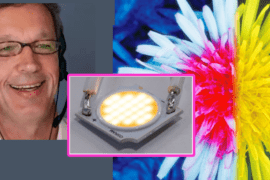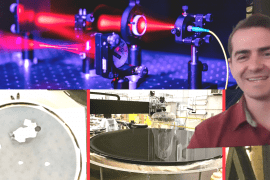After becoming increasingly concerned by the state of design around him in the early 1980s – or what he called “an impenetrable confusion of forms, colors and noises” – industrial designer Dieter Rams established for himself what is now known as the Ten Principles of Good Design. To date, these principles have provided the foundation for some of the most effective design solutions within the past few decades.
More recently, Dutch industrial designer Patrick Schuur of form + function put these ten principles into context when he set out to redesign the classic men’s razor for a client who wanted to create a no-nonsense wet shaving system that merges rituals of the past with the comforts provided by today’s manufacturing capabilities.
Starting with four main requirements for the finished product – comfort, sustainability, beauty and value – from RZR founders Marco Vermeer and Remco Smit, Schuur dove head-first into bringing the next-generation razor concept to realization.
We caught up with Patrick to talk more about his latest project and how he leverages modern prototyping tools to bring the client into the design process early on – a critical factor that helps him save time and arrive at the optimum design solution.

SS: Hey, Patrick! Can you tell us more about “who” you are and your background in product design?
PS: My name is Patrick Schuur and I am the founder of form + function (ff.), an Eindhoven-based studio for product design. We work for a wide variety of clients, working on projects ranging from automotive and industrial equipment to products for the ‘consumer’ market. We are active in all stages of the design process starting with research then moving onto ideation, design, prototyping, engineering and finally, production.

SS: How did you get started in product design? What kind of projects have you worked on?
PS: I studied Industrial Design at the Eindhoven University of Technology. My first “real world” product design experience was at my internship project at Griffin Technology – a Mac and iPod accessory maker. While at Griffin, I used SolidWorks for the first time and used 3D printing as a part of my daily design process. The internship was in 2005 and 3D printing was still fairly expensive, so it was nice to be able to work with a company that had a budget that allowed me to work extensively with physical prototypes.
After graduating in 2007, I went on to start ff. and began working with local design and engineering companies on projects ranging from an industrial pick and place robot and interlocking systems for use in the petro chemical industry to mobile phone accessories, laboratory equipment and various consumer electronics projects. More recently, we have been working with startups as a single point of contact for design, prototyping and engineering services.

SS: Can you explain your design process? Do you start with pencil sketches or jump directly into CAD?
PS: After some quick ideation sketches I almost immediately move into SolidWorks to 3D model ideas. While in SolidWorks I also use Keyshot as a tool for creating quick visualizations early on in the process. What I like about working in CAD from an early stage is that it is easy to get a sense of scale as you can import reference objects from websites such as GrabCAD. I like to print out early ideas on the studio’s Ultimaker 3D printer or through an industrial printing service such as 3D Hubs HD. Being able to print out models of ideas that are still at a very early sketch phase has really changed the dynamics of the design process – particularly because it is so much faster and easier than it used to be. Additionally, it also gives me the opportunity to get clients involved very early in the design process. There’s a famous saying at IDEO – “if a picture is worth a 1000 words then a prototype is worth a 1000 meetings” – I can only agree with that.

SS: What about inspiration – what companies, designers or objects inspire you?
PS: I have several. Not to sound cliché, but the one that sticks out the most is the industrial design group at Apple; I just love Apple’s product design and I am always amazed by the build quality and finish of their products. Specifically, they often design or engineer really nice solutions for the kinetic experience of opening and closing on their products – such as opening the Mac Pro computer, the SIM ejector tray on the iPhone or the battery enclosure cap on the wireless keyboard. Despite more recent criticisms of their design, they also continue to push the envelope on integrating new interaction technologies such as Touch ID, 3D Touch and the new Touch Tone display. Those technologies are difficult to develop and to integrate at such a large scale. When people say Apple is losing its innovative edge I try to point those things out – but sadly, many people don’t think of those as very spectacular innovations – while those are exactly the things that show they care deeply about the products they create and give you the feeling their products just work. Finally, I happen to like how their products don’t change much over the years (look at the Macbook power bricks for instance, or the recently introduced iPhone SE, or the iPhone line in general). They think deeply about a path to follow and then stick to it for years to come – rather than trying to wow everybody with crazy designs each year.

SS: Now that we know you a little bit better as a designer, can you tell us more about this current razor project – what is it and how did it come to be?
PS: RZR is a shaving system that is as simple and sustainable as an old fashioned safety shaver combined with the comfort of modern shaving at an honest price. It all started in 2013 when Marco Vermeer and Remco Smit, the guys behind RZR, came to ff. with the request to design a shaver. At our first meeting, Marco and Remco stated that the razor had to have four main requirements: it had to be comfortable, it had to look good, it had to be sustainable and finally, it had to be cost-effective to produce – specifically the replacement razors.
The resulting titanium design is a combination of the best features from both modern shavers and old-fashioned safety razors. More specifically, it has the comfort of a modern razor with the durability and timeless style of an old-fashioned shaver. The blades consist of metal only and will get picked out by a magnet in waste management facilities. This is a huge difference from consumables of modern day wet shaving systems which feature a lot of plastic, extra bits of metals and things like lubrication strips – all of which get thrown in the trash and make them extremely difficult to recycle.

SS: How did you arrive at the final design of the RZR?
PS: At the beginning of the design process we did multiple rounds of FDM prototyping for proof of concept testing with glued-on razor blades we had laying around. That exploration process worked wonderfully and we continued with FDM prints to get the size and the shape right in the hand. As the project continued to move forward we needed higher resolution prints to be able to test interlocking parts and test the working of spring loaded ball plungers. First, we did several versions of this with a Formlabs SLA 3D printer – a process that gave us nice-looking models but unfortunately they were not very durable. From this stage, we moved onto high-quality Polyjet 3D printing to give us a very refined look at the final size and fitting of parts. Finally, we sent out an order for aluminum CNC milled prototypes.

SS: What design process “hack” would you recommend to today’s new crop of product designers?
PS: Use 3D printing to get your designs and prototypes right early on – it is fast and can save a lot of time and money down the line.

Be sure to check out the RZR over on Kickstarter.






